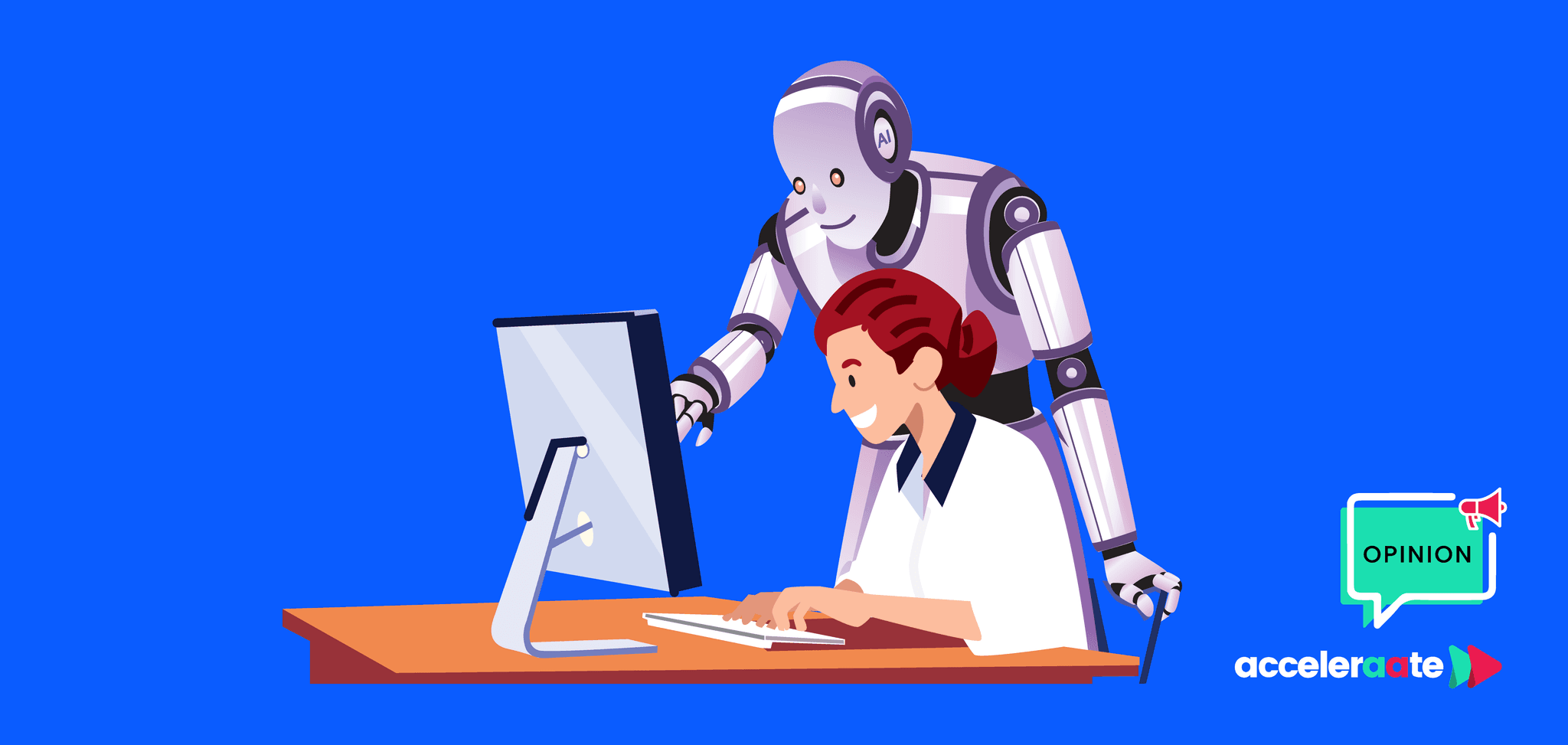
For decades, each whisper of “automation” has sent shivers down spines. From the mechanised looms of the Industrial Revolution to today’s Conversational and Agentic AI. In the world of Customer Experience, the question feels even more urgent: Will chatbots, virtual agents and intelligent analytics render human agents obsolete?
Having spent the last few months under the hood of Zoom's latest generation (and extremely capable) Virtual Agent technology, it's a perennial question that we felt worth revisiting.
The myth of mass displacement
An historical perspective
Luddites vs. loom: In the early 19th century, textile workers smashed power looms fearing job loss. Yet the industry rebounded, jobs shifted, and new roles emerged in areas like maintenance, design, and quality control.
Banking ATMs: Introduced in the 1970s to automate cash withdrawals. ATMs did not eliminate bank counter advisors; they transformed their role, where they now advise on loans, mortgages, cross‑sell services and handle more complex requests.
Fear vs. reality in CX
Endless IVR loops: We’ve all experienced ancient phone menus trapping us in “press 1 for more options.” Early automation was about cost‑cutting, not customer satisfaction, and left agents and customers frustrated.
Modern conversational AI: Today’s virtual agents handle tier‑1 queries like balance checks, order status, and basic troubleshooting. Importantly, freeing human agents for high‑complexity, high‑empathy interactions.
Industries ripe for AI‑driven efficiency
Contact centres
Automatic call routing powered by sentiment analysis and predictive analytics ensures customers are directed to the right specialist, reducing handle time and repeat calls.
AI‑assisted agent desktops surface relevant knowledge articles and agent guidance in real time, cutting research and resolution time by 30%+.
Retail and e‑commerce
Personalised recommendations adapt on the fly using browsing and purchase history, boosting average order value.
Inventory forecasting with machine learning minimises out of stocks and overstock, slashing holding costs.
Financial services
Fraud detection engines analyse transaction patterns in milliseconds, blocking suspicious activity before it impacts customers.
Digital assistants guide users through mortgage applications or investment decisions, reducing drop‑off rates.
Manufacturing and logistics
Predictive maintenance flags equipment wear‑and‑tear before downtime occurs, saving millions in emergency repairs.
Dynamic routing for fleets cuts fuel consumption and speeds deliveries by rerouting in real time around congestion.
Why humans still matter
Emotional intelligence
AI can gauge sentiment, but only humans can truly empathise. When a customer calls about a late delivery affecting their wedding flowers, they want compassion first, and solutions second.
Creative problem‑solving
Chatbots follow patterns; humans think laterally. For example, when a campaign underperforms, it takes a creative marketer to pivot strategy based on intuition and experience.
Ethical oversight
AI learns from data, and data can reflect bias. Humans must set and manage guardrails to ensure fairness, privacy and compliance.
Who is most at risk?
It’s not necessarily the person... It's the process. Roles in which AI:
Replaces repetitive, rule‑based tasks without human oversight.
Generates insights that go unused because no one understands how to act on them.
Those who ignore AI tools: Leaving unanswered emails, slow customer service responses, manual data entry, and siloed reporting, will find their productivity eclipsed by peers who harness automation. AI effectively removes the barriers to entry to many industries today, so larger more established organisations may now find themselves very quickly outpaced by exponentially more efficient new entrants. Because what once took years, can now be achieved in a matter of weeks.
How to stay ahead of the curve
1. Embed AI in everyday workflows
Map your processes first. Identify high-volume, low-complexity tasks (e.g. password resets, order status) as pilot use cases. Document each step (inputs, outputs, handoffs) and look for pain points (long wait times, frequent transfers)
Choose the right integration pattern. Leverage pre-built connectors from your CCaaS/CRM vendor where possible, or use Acceleraate's IntegrationHub for Zoom.
Triage & routing: sentiment-powered IVR or chat pre-screening to assign tickets to the best agent or bot skill
Summarisation & tagging: on close, the AI auto-writes call/chat summaries and flags topics, sentiment, or compliance risks directly on the CRM record.
Remove friction. Ensure agents never leave their desktop: surface AI suggestions (responses, knowledge-base articles, next-best actions) inline. Automate routine status updates such as ticket creation, SLA alerts, follow-up reminders, so humans focus on exceptions, not data entry.
2. Upskill your workforce
Build a modular curriculum. Offer short workshops on:
Prompt engineering: How to craft clear, structured inputs for different AI models (e.g. customer replies vs. summarisation).
Data literacy: Understanding basic statistics (accuracy, precision, recall), spotting bias, interpreting dashboards.
Tool configuration: Tuning intent thresholds, managing fallback flows, versioning AI scripts.
Blend theory with practice. Run “AI days” where small cross-functional teams tackle real support tickets using sandbox tools. Celebrate successful automations and share before/after metrics.
Create AI champions. Nominate super-users in each department to provide peer coaching, collect feedback, and liaise with your IT or vendor teams to surface usability issues early.
3. Measure and iterate
Define your North Star metric. For CX, this might be “self-service containment rate” (the percentage of issues deflected by AI without human intervention) or “AI-assisted CSAT lift.”
Track leading and lagging indicators:
Leading: number of AI-suggested responses used, bot abandonment rate, intent-recognition accuracy.
Lagging: average handle time (AHT), first-contact resolution (FCR), overall CSAT/NPS.
Establish a weekly feedback loop. Review dashboards each sprint:
Pinpoint low-confidence intents or “no-match” triggers.
Retrain models or refine prompts.
Redeploy and A/B test changes on a small subset before full rollout.
Automate reporting. Push key metrics into your team’s regular stand-up or OKR reviews, Keep AI performance visible and actionable.
4. Champion a human-AI partnership
Position AI as a coach, not a crutch. Configure your system to generate draft responses or next-best actions with clear “suggested by AI” labels. Encourage agents to review, personalise, and own the final customer interaction.
Gather agent feedback continuously. Embed a one-click “thumbs up/down” on AI assists within the agent desktop. Route negative feedback directly to your AI team for rapid triage.
Reward collaborative wins. Share monthly “AI+Human Spotlight” stories highlighting cases where the agent + AI combo achieved record CSAT, resolved a high-priority issue, or uncovered a new upsell opportunity.
Encourage a growth mindset. Remind your teams that AI tools evolve. Early adopters help shape workflows, influence roadmap priorities, and build institutional expertise that sets your organisation apart.
In Summary: Embrace or be replaced
The real “job-stealer” isn’t AI, it’s complacency. Organisations that dismiss AI as a threat or a passing fad will watch competitors surge ahead in cost efficiency, service quality, and innovative offerings. Whereas, teams that weave AI into their DNA will:
Supercharge impact: Automate routine work so people can focus on high-value, high-empathy interactions.
Maximise efficiency: Turn every byte of data into real-time insights, slashing cycle times and boosting throughput.
Delight customers: Anticipate needs with personalised experiences and lightning-fast resolutions.
Unlock growth: Free up capacity for creativity, experimentation, and new product or service lines.
TL;DR: AI won’t replace you. People who refuse to replace yesterday’s methods with AI-powered workflows will be the ones left behind. Embrace the tools, train your teams, measure relentlessly, and champion the human-AI partnership, or risk watching your role and maybe even your organisation become obsolete.
Take the next step
Don’t let fear of the unknown leave you trailing behind. If you’re ready to supercharge your CX (and beyond) with AI that empowers rather than replaces, let’s talk.
Take the next step today
About the author

Part of Founded Group Limited








